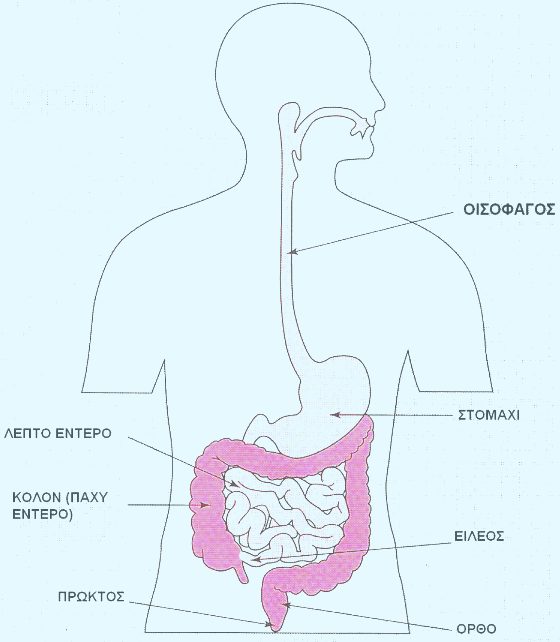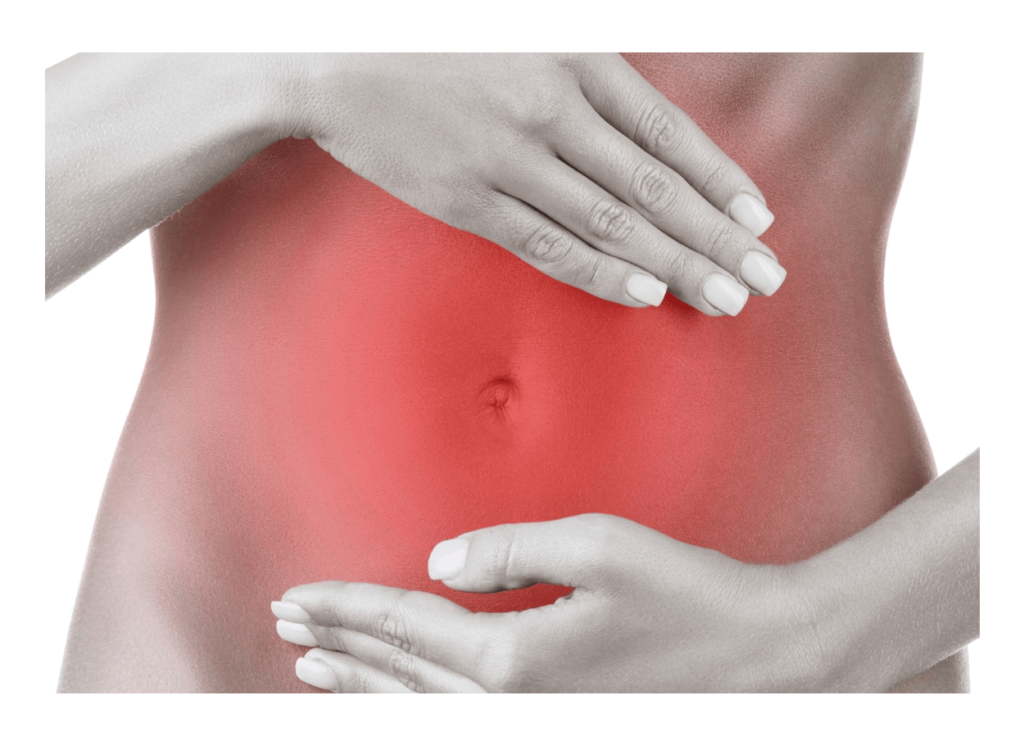Crohn's disease (granulomatous colitis or local enteritis), although first discovered by the Scottish surgeon and pathologist T Kennedy Dalziel , owes its name to Dr. Burrill B. Crohn , who in 1932 published the first relevant paper together with his colleagues Gordon Oppenheimer and Leon Ginzburg.
Almost 90 years later, science still has not determined what causes Crohn's disease, and no one can predict how it will develop in a patient. In recent years, however, treatments have been found that effectively combat the symptoms of the disease, while certain genes responsible for it have already been found. The scientific community is generally optimistic that the cause and definitive treatment of Crohn's disease are not far off.

B. Braun ostomy materials are specially designed with a primary focus on safety, comfort and discretion, offering real solutions to everyday problems such as irritation, odor and gas .
Try it for free
Crohn's Disease: What is it?
Initially, Crohn's disease was thought to be the same condition as ulcerative colitis . The truth is that they are quite similar but also have big differences. Both belong to the idiopathic inflammatory bowel diseases , or IBD .
In patients with Crohn's disease, the immune system attacks the lining of the digestive tract (mucosa), causing inflammation, often leading to abdominal pain, severe diarrhea, fatigue, weight loss, and malnutrition. However, it most commonly affects the lower part of the small intestine (the ileum) and the beginning of the large intestine. More specifically, the three main sites of the disease are:
- In the small intestine 30% (Ileal Crohn)
- In the small and large intestine simultaneously 30-40% (Crohn Ileocolic)
- In the large intestine 20-30% (Crohn's colitis)
It is extremely rare for it to occur in the stomach or esophagus.

Cause
Dozens of theories have been formulated, but none of them are completely satisfactory.In recent years, it appears that Crohn's disease is due to a complex interaction of the genes inherited by the patient and environmental factors (antigens) such as viruses or bacteria, smoking, taking antirheumatic drugs, adding preservatives to foods, changing dietary habits, and stress (although the latest research shows that stress only contributes to the recurrence of the disease and not to its onset).
What is certain is that something prompts the body's defenses to attack the inner surface of the digestive system, creating inflammation and all the problems that accompany them.
What do the statistics reveal?
Epidemiological studies worldwide show that patients with IBD are more common in developed than in developing countries. In 2015, it was determined in the USA that by then over three million patients had been diagnosed with some form of inflammatory bowel disease , i.e. 1.3% of the adult population.
- The prevalence of Crohn's disease in North America and Europe was 321 per 100,000 people in 2012 .
- Canada has the highest incidence of Crohn's in the world
- It is usually diagnosed in young adults between the ages of 15 and 35.
- Smokers are twice as likely to develop the disease, while smoking exacerbates the symptoms of the disease and increases the likelihood of an exacerbation.
- It occurs more often in women
- It occurs more often in Caucasians
- Crohn's rates are higher in developed countries, urban areas, and northern climates.
- 5% – 20% of people with IBD have a first-degree relative with a similar disease
- When both parents have Crohn's disease, the risk for their children to develop Crohn's disease is 35%.
Unfortunately, in Greece we do not have enough statistical data . The gastroenterology clinic of PEPAGNIS was the first in Greece that, after a serious study, presented official data for Crete, while according to data from the gastroenterology clinic of the National Hospital of Gastroenterology presented by Professor of Gastroenterology Spyridon Potamianos in 2017, over 1,000 people throughout Thessaly suffer from Crohn's Disease, while he emphasized that the number is actually double since in many cases the condition has not been diagnosed or has been misdiagnosed.
Thanks to their work, it is estimated that in Greece approximately ten thousand of our fellow human beings suffer from Crohn's disease .
What is the probability of cancer in patients with Crohn's disease?
We now know that Crohn's disease contributes to the development of cancers in the gastrointestinal system. The risk is very low initially and the longer the length of the gastrointestinal tract that is affected and the more years have passed since the diagnosis. Regular colonoscopy, exercise and a healthy diet minimize the possibility of cancer. After all , all studies show that life expectancy in patients with Crohn's disease does not differ from that in the general population .
The symptoms
The symptoms of Crohn's disease can range from mild to very severe . It is a chronic condition, meaning that something is constantly going on. Thus, there are periods of good health (remission) alternating with periods of worsening symptoms (relapse). In extreme cases, doctors have to deal with a very severe clinical picture with high fever, toxic megacolon, which can even threaten the patient's life.
The severity and type of symptoms depend directly on the organ of the digestive system that is affected and on the type of complications ( stenosis, abscesses, fistulas ). Symptoms usually manifest gradually but can also appear suddenly, without any warning signs.

- Diarrhea
- Constipation
- Abdominal pain, usually in the lower right
- Fatigue
- Decreased appetite and weight loss
- Fever
- Pain or dryness in the anal area (fistulas and abscesses)
- Bleeding during bowel movements
- Redness of the eyes (iridocyclitis)
- Rashes (erythema nodosum)
- Irritation in the oral cavity (canker sores)
- Inflammation of the liver or gallbladder
- Musculoskeletal pain and arthritis
- Menstrual cycle disorders
- Delayed development in children
Because the lower part of the small intestine (ileum) is usually affected, which is very close to the appendix, the initial diagnosis is often incorrect, as the disease resembles acute appendicitis. However, there are also symptoms that are not related to the intestine, and their connection with the disease is being studied by gastroenterologists and surgeons.
As bad as all this sounds, it doesn't mean that all patients with Crohn's disease will have serious complications. Usually the symptoms are in remission even for a long time without bothering them at all. Unfortunately, there is no way to predict how long someone will be completely well and when they will relapse.
Diet for Crohn's disease
While no specific food or drink has been implicated as being responsible for relapses of Crohn's disease, the following dietary advice is usually given.
Prefer
- Cheese
- Yoghurt
- Eggs
- Almond milk
- Fatty fish
- Chicken and turkey
- Avocado
- Potatoes
- Cooked carrots
Avoid
- Alcohol
- Butter, mayonnaise, margarine
- Coffee, tea, chocolate
- Corn
- Fried foods
- Foods rich in fiber
- Nuts
- Raw fruits and vegetables
- Red meat and pork
- Spicy foods
In general, the diet should be adequate in nutrients. Although there seems to be an issue with plant-based foods, without them being prohibited, there is usually no problem when they are well cooked.
Of course, each person is different and it would be a good idea to identify which types of foods cause problems and avoid them. In any case, don't forget that your doctor is the best advisor in everything related to illness.

Of course, when Crohn's disease is accompanied by anorexia, poor absorption and diarrhea, the body loses fluids, nutrients, vitamins and trace elements. In addition to a good and balanced diet, it is often good to supplement it with nutritional supplements and vitamins .
Treatment
Each doctor has a different therapeutic approach to similar cases of Crohn's disease due to the complexity of the symptoms, so therapeutic techniques initially aim to relieve the patient by reducing inflammation and maintaining the disease in remission.
Pharmaceutical treatment
Initially, the disease is controlled with medication, both to limit symptoms in the event of relapse and to maintain periods of remission.
- Cortisone (during disease flare-ups)
- Azathioprine
- Mesalazine
- Antibiotics to control possible infections
- gr/viologikoi-paragontes-ifne/" target="_blank" rel="noreferrer noopener"> Biological factors
- Special dietary preparations
Surgical treatment
It can and should be avoided, especially in the early stages of the disease, but when medication fails or there are serious side effects, complications, and signs of acute abdomen, then surgery is required.
During the operation, the most affected part of the intestine is usually removed and joined to the remaining healthy intestine. In other cases, parts or even entire organs of the gastrointestinal system are removed and a stoma is created.
- Stenoplasty
It is performed when there are strictures in small sections of the small intestine by widening the strictures without removing the intestine. - Excision
Removal of the parts of the intestine that show alterations and joining the healthy parts together. - Proctocolectomy and ileostomy
The entire colon and rectum, as well as the end of the small intestine, are removed, creating a permanent opening ( ileostomy ). A special bag (ileostomy bag) is placed over this, into which waste from the small intestine is now directed instead of passing through the colon and ending up in the anus. - Ileorectal anastomosis
Because the rectum is often not affected even when the colon is severely diseased and needs to be removed entirely, it is possible for the ileum to join the upper end of the rectum. - Partial colectomy
Creation of a colostomy, usually in the lower left part of the abdomen when only the lower part of the intestine is affected. - Temporary stoma: ileostomy or colostomy
The ileum or colon is brought into the abdominal wall and stomas are created to empty the contents of the intestine into stoma bags until the intestine heals. Then another operation is performed to remove the stoma.
Crohn's Disease: Ostomy Bags
A stoma is a surgically created opening in the abdomen that is used to direct bowel movements into a pouch, or stoma bag. Such a procedure, as well as colostomy and ileostomy pouches, may initially be frightening, but they are actually there to relieve you of the severe symptoms of Crohn's disease .
In recent years, leading companies such as B Braun have evolved ostomy bags, making them completely discreet, comfortable and safe, enabling millions of our fellow humans worldwide to continue their lives normally.
You can also always ask for advice and help from HELLESCC , the Greek Association of People with Crohn's Disease and Ulcerative Colitis.


